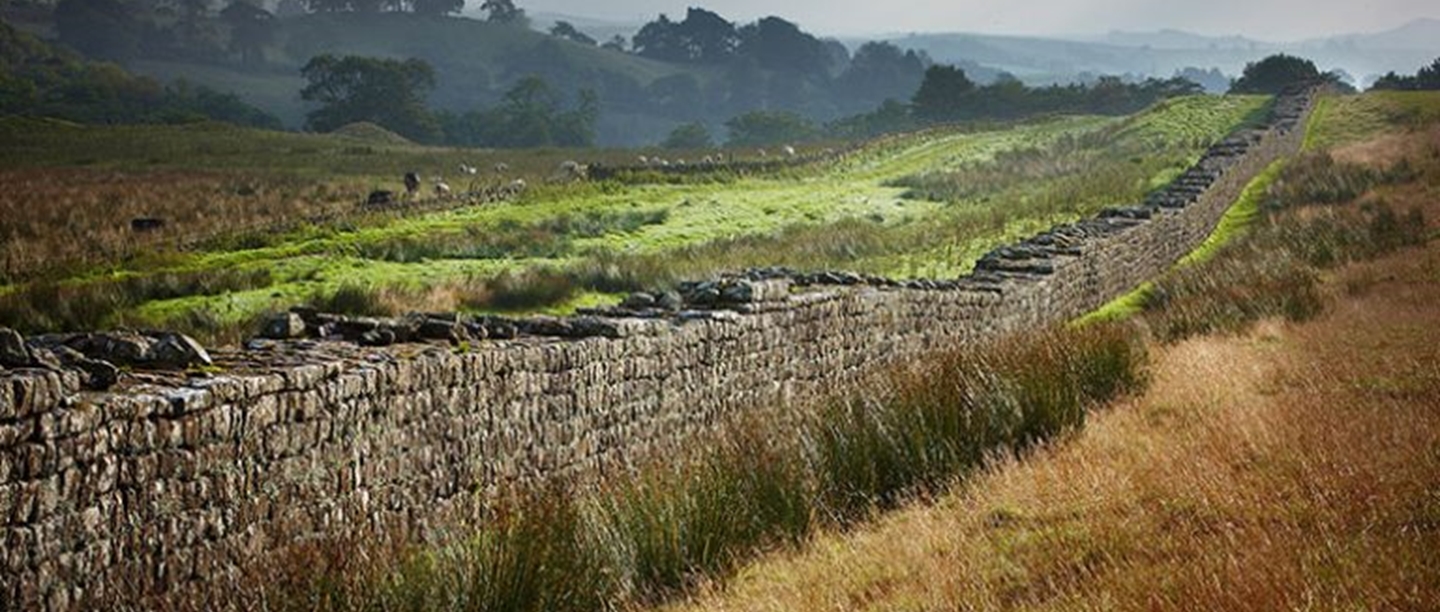
It’s well known that George R R Martin drew on many aspects of British history as inspiration for the world of Game of Thrones. The immense ice wall that protects the northern border of Westeros is definitely reminiscent of a certain structure in our care. But how similar was life for the Roman soldiers on Hadrian’s Wall and the fictional Night’s Watch? As the world’s biggest TV show returns for its final season, English Heritage Collections Curator Frances McIntosh discusses some of the similarities and differences between the two.
Army organisation
The Night’s Watch has three roles for its recruits, the Rangers, the Builders and the Stewards. While it was not so clear cut as this in the Roman army, all three roles were represented. The cavalry based at Chesters would have acted in a similar way to the Rangers, patrolling north (and south) of the Wall, forming a formidable force.
Hadrian’s Wall was built and maintained by soldiers, just like in Game of Thrones. They put up inscriptions proudly stating their building achievements. This evidence helps us to piece together who built which sections, and which units were based at different forts. The Clayton Museum at Chesters has over 50 centurial stones, which were built into Hadrian’s Wall and give the names of the centuries who built a section.
As in the Night’s Watch, all soldiers in the Roman army were expected to fight, but they would also have carried out other tasks as required. The officer whose job was to look after the granaries at Corbridge, a task the Stewards undertake in Game of Thrones, is known from an altar he set up. Evidence of writing such as inkwells and styli tells us about the administration needed to run a fort.
Part of an empire
Whilst George R R Martin’s Night’s Watch are all from Westeros, there is still a mixture of the old and new religions worshipped at the Wall. The Faith of the Seven is the state religion but many people still worship the Old Gods. Indeed when Stannis Baratheon comes to the Wall, bringing the Red Woman and the Lord of Light, this brings a third religion into the melting pot.
People came to Hadrian’s Wall from all over the Empire and held many different beliefs. The Romans brought their own religious system, with their many deities, to the places they conquered. However, as with their fictional counterpart, they did not suppress the local religions, as long as the state religion was observed.
Edge of Empire
Hadrian’s Wall stood at the north-western edge of the Roman Empire, with the soldiers stationed there looking out onto the unconquered lands. There was some trade with the people north of the Wall, but this area was also where most of the trouble came from. Like the Night’s Watch, Hadrian’s Wall was patrolled, although if you try to find out if there was a wall-walk along the top, beware. This is a point long argued between scholars!
In Game of Thrones, the Wall has long been neglected, with fewer soldiers and supplies meaning most forts have been abandoned. The political attention has turned south, away from the Wall, leaving the great ice barrier under-manned and in poor repair.
Towards the end of the 4th century, troubles elsewhere in the Empire, from invasions to civil wars, meant that Hadrian’s Wall, and indeed Britain, began to suffer a similar fate. Soldiers were taken from the province to help protect other frontiers, or to boost a claim to the imperial throne. Roman rule in Britain officially ended in AD 411, but Hadrian’s Wall had not been at full defensive capacity for some decades.
Not quite identical
There are some important distinctions between the two fighting forces of the Roman army and the Night’s Watch, not least of which is the length of service. The auxiliary soldiers serving on Hadrian’s Wall had to serve 25 years in order to receive citizenship but service in the Night’s Watch is a life sentence. How many of the Roman soldiers survived those 25 years is an impossible question to answer.
Recruitment to the two armies was very different too. Most of the Night’s Watch are criminals, sent to the Wall instead of prison – so not necessarily a strong fighting force. The Roman army however recruited into their auxiliary troops the fighting men of the provinces and areas they conquered. This meant that new skills such as horsemanship and archery were brought in, and that fighting men were removed from their home areas – a very clever move. The Night’s Watch commanders have the hard task of training up criminals who probably have little or no fighting experience, and do not want to be up in the frozen North.
I personally think that life on the Wall is harder for the Night’s Watch – they are fighting the undead while the Romans were merely battling the unconquered people from the North!


